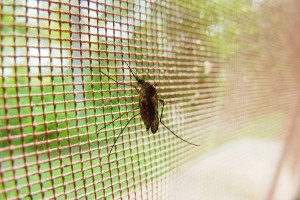
World Malaria Day: April 25
In 2020, COVID-19 emerged as a serious challenge to malaria responses worldwide. More than one year into the pandemic, substantial disruptions to health services persist across the globe. According to the results of a new World Health Organisation survey, approximately one third of countries around the world reported disruptions in malaria prevention, diagnosis and treatment services during the first quarter of 2021.
In many countries, lockdowns and restrictions on the movement of people and goods have led to delays in the delivery of insecticide-treated mosquito nets or indoor insecticide spraying campaigns. Malaria diagnosis and treatment services were interrupted as many people were unable – or unwilling – to seek care in health facilities.
Since the early days of the pandemic, WHO has urged countries to maintain essential health services, including for malaria, while ensuring that communities and health workers are protected from COVID-19 transmission. Heeding the call, many malaria-endemic countries mounted impressive responses to the pandemic, adapting the way they deliver malaria services to the COVID-19 restrictions imposed by governments.
Also read:
- El Salvador becomes the first malaria-free country in Central America
- 21 countries eliminated malaria over the last two decades – WHO
WHO also called on all people living in malaria affected countries to “beat the fear”: people with a fever should go to the nearest health facility to be tested for malaria and receive the care they need, within the context of national COVID-19 protocols.
As a result of these efforts, the worst-case scenario of a WHO modelling analysis was likely averted. The analysis found that if access to nets and antimalarial medicines was severely curtailed, the number of malaria deaths in sub-Saharan Africa could double in 2020 compared to 2018.
In 2019, there were an estimated 229 million cases of malaria and 409 000 malaria-related deaths in 87 countries. Of the 87 countries with malaria, 46 reported fewer than 10 000 cases of the disease in 2019 compared to 26 countries in 2000.
The WHO African Region shouldered 94% of all malaria cases and deaths worldwide in 2019. Children under the age of 5 years in sub-Saharan Africa continued to account for approximately two thirds of global deaths from malaria.
About 3% per cent of malaria cases in 2019 were reported in the WHO South-East Asia Region and 2% in the WHO Region for the Eastern Mediterranean. The WHO Western Pacific Region and the WHO Region of the Americas each accounted for fewer than 1% of all cases.
Although progress in the global response to malaria has stalled in recent years, a growing number of countries with a low burden of malaria are approaching, and achieving, the target of zero malaria transmission. Between 2000 and 2020, 24 countries reported zero indigenous cases of malaria for 3 or more years.
By the end of 2020, 24 countries had reported interrupting malaria transmission for 3 years or more. Of these, 11 were certified malaria-free by WHO. These countries include: Algeria, Argentina, Armenia, Azerbaijan, Cabo Verde, China, Egypt, El Salvador, Georgia, Islamic Republic of Iran, Iraq, Kazakhstan, Kyrgyzstan, Malaysia, Morocco, Oman, Paraguay, Sri Lanka, Syrian Arab Republic, Tajikistan, Turkey, Turkmenistan, Uzbekistan and the United Arab Emirates.
This year, ahead of the World Malaria Day, WHO launched effort to stamp out malaria in 25 more countries by 2025. “Many of the countries we are recognizing today carried, at one time, a very high burden of malaria. Their successes were hard-won and came only after decades of concerted action” said Dr Tedros Adhanom Ghebreyesus, WHO Director-General. “Together, they have shown the world that malaria elimination is a viable goal for all countries,” he noted.
Though each country’s elimination journey is unique, common drivers of success have been seen across all regions.
“Success is driven, first and foremost, by political commitment within a malaria-endemic country to end the disease,” said Dr Pedro Alonso, Director of the WHO Global Malaria Programme. “This commitment is translated into domestic funding that is often sustained over many decades, even after a country is malaria-free,” he added.
Most countries that reach zero malaria have strong primary health care systems that ensure access to malaria prevention, diagnosis and treatment services, without financial hardship, for everyone living within their borders – regardless of nationality or legal status.
Robust data systems are also key to success, together with strong community engagement. Many countries that eliminate malaria have relied on dedicated networks of volunteer health workers to detect and treat the disease in remote and hard-to-reach areas.
So far as India is concerned, the country has been able to reduce the malaria burden in terms of cases by 84.5% and deaths by 83.6% which has been well recognized by World Malaria Reports of 2018, 2019, and 2020. In 2020, as many as 116 districts in the Country reported zero malaria cases. India hopes that it will be able to achieve its malaria elimination target by 2030.
Through the E-2020 initiative, launched in 2017, WHO has supported 21 countries in their efforts to get to zero malaria cases within the 2020 timeline. A new WHO report summarizes progress and lessons learned in these countries over the last 3 years.
According to the report, 8 of the E-2020 member countries reported zero indigenous cases of human malaria by the end of 2020: Algeria, Belize, Cabo Verde, China, El Salvador, the Islamic Republic of Iran, Malaysia and Paraguay. In Malaysia, the P. knowlesi parasite, normally found in monkeys, infected approximately 2600 people in 2020.
A number of other countries made excellent progress: Timor-Leste reported only 1 indigenous case, while three other countries – Bhutan, Costa Rica and Nepal – reported fewer than 100 cases.
Building on the successes of the E-2020, WHO has identified a new group of 25 countries that have the potential to stamp out malaria within a 5-year timeline. Through the E-2025 initiative, these countries will receive specialised support and technical guidance as they work towards the target of zero malaria.
Malaria elimination in the Greater Mekong
In the face of the ongoing threat of antimalarial drug resistance, countries of the Greater Mekong subregion have also made major strides towards their shared goal of elimination by 2030.
In the 6 countries of the subregion – Cambodia, China (Yunnan Province), Lao People’s Democratic Republic, Myanmar, Thailand and Viet Nam – the reported number of malaria cases fell by 97% between 2000 and 2020. Malaria deaths were reduced by more than 99% in this same period of time, from 6000 to 15.





